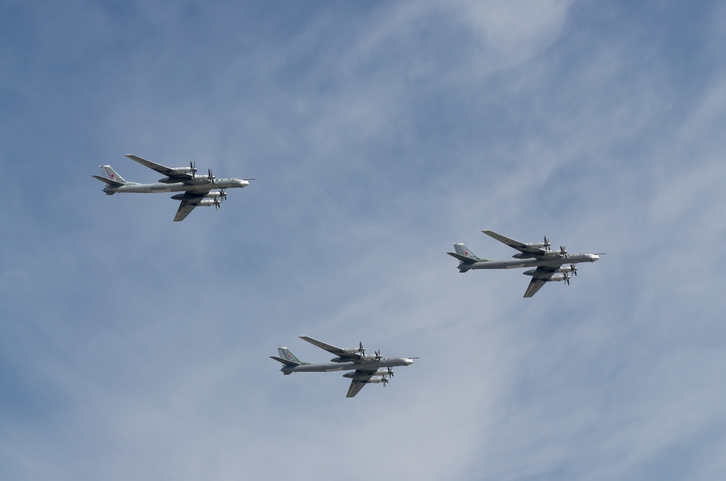The bears in question are Tupolev Tu-95 Russian bombers – with the NATO code-name “Bear.” So, what are Russian nuclear bombers doing mucking around in the Canadian Arctic?
The Bear Bomber has been around since 1956, and was first intended as a nuclear bomber… and it carried some whoppers in its time. One carried the biggest nuclear weapon ever tested, the 57 megaton ‘Tsar-Bomba.’ However, the long endurance of the Tu-95 (it can travel over 15,000 km without being refuelled) has meant that the aircraft’s most common operational role is maritime reconnaissance.
The Soviets made over 500 Bears, and some 63 are still in use as reconnaissance aircraft, but some are also still nuclear bombers and might carry a mix of cruise missiles and free-fall bombs. Over the decades, they have made frequent appearances off all three coasts of North America, and many incursions needed to be escorted away from Canadian or American territory.
Generations of Canadian fighter pilots have eyeballed Bear Bombers up close, sometimes somewhere outside of our air space… just. For decades, they were used to probe NORAD’s radar coverage, test our response times, saucily trail their coats up and down the coasts, or just serve as a reminder of Russia’s interest in us.
Bear Bomber intrusions slowed down with the end of the Cold War but never stopped entirely. Sometimes they are Moscow’s way of responding when Canada or the U.S. get involved in NATO activities on the periphery of Russia’s borders, and sometimes just a way of keeping their intelligence picture up to date.
One disturbing intrusion took place off Alaska in September, 2014, when a pair of Russian Bear Bombers were escorted by two Mig-31 Foxhound Russian fighter jets – one of the most advanced designs the Russians have yet produced. In all the decades of Bear intrusions, they’ve never had a fighter escort before.
In the last few days, Bear Bombers have turned up off Alaska and Canadian airspace some four times, but without coming too close. NORAD has said nothing about any fighter escorts this time.
As the Bear is likely to remain in service until 2040, we can expect that at some future day the next generation of RCAF interceptor will join the long list of CF-100 Canucks, CF-101 Voodoos, and CF-18s that have grown accustomed to meeting this Russian bomber on the edge of our airspace.
John Thompson is a researcher, writer and commentator on defence and security issues at www.thinktankofone.com
Pursuit.ca


